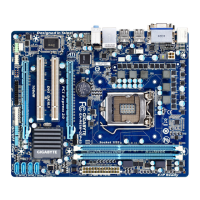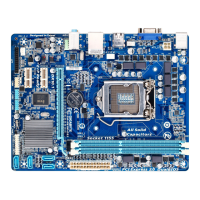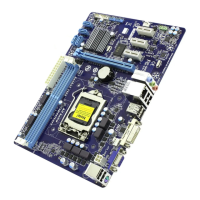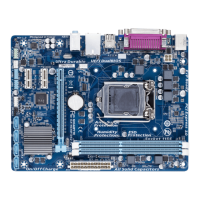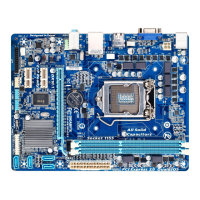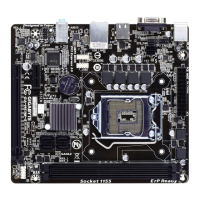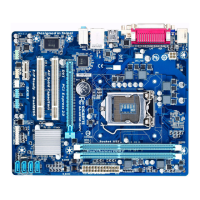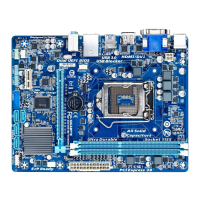Do you have a question about the Gigabyte GA-H61M-D2H and is the answer not in the manual?
Visual representation of the motherboard components and connectors.
Diagram illustrating the interconnections between motherboard components.
Safety and procedural guidelines before installing hardware.
Detailed technical specifications of the motherboard components.
Step-by-step guide for CPU installation on the motherboard.
Instructions for installing RAM modules correctly.
Procedure for inserting expansion cards into slots.
Description of external ports and their functions on the rear panel.
Identification and function of internal motherboard headers and connectors.
Overview of the screens displayed during system boot.
Introduction to the BIOS main menu and navigation.
Settings for CPU, memory, and voltage adjustments.
Configuration for system date, time, and basic hardware settings.
Advanced system boot and hardware options configuration.
Configuration of onboard devices like SATA, USB, LAN, and Audio.
Settings for system power states and wake-up events.
Monitoring of system voltages, temperatures, and fan speeds.
Option to load the safest, most stable BIOS default settings.
Option to load optimal BIOS default settings for system operation.
Setting BIOS access passwords for security.
Saving BIOS configuration changes and exiting the setup utility.
Exiting BIOS setup without saving any configuration changes.
| ECC | No |
|---|---|
| Non-ECC | Yes |
| Memory voltage | 1.5 V |
| Memory channels | Dual-channel |
| Number of memory slots | 4 |
| Supported memory types | DDR3-SDRAM |
| Maximum internal memory | 16 GB |
| Supported memory clock speeds | 800, 1066, 1333 MHz |
| Supported memory module capacities | 4GB |
| Processor socket | LGA 1155 (Socket H2) |
| Processor manufacturer | Intel |
| Compatible processor series | Intel Celeron G, Intel Pentium |
| USB 2.0 connectors | 2 |
| Number of Parallel ATA connectors | 0 |
| Headphone outputs | 3 |
| USB 2.0 ports quantity | USB 2.0 ports have a data transmission speed of 480 Mbps, and are backwards compatible with USB 1.1 ports. You can connect all kinds of peripheral devices to them. |
| Audio chip | Realtek ALC889 |
| Component for | PC |
| Power source type | ATX |
| Motherboard chipset | Intel® H61 |
| Audio output channels | 7.1 channels |
| Motherboard form factor | micro ATX |
| Compatible operating systems | Windows 7/Vista/XP |
| Supported storage drive interfaces | SATA II |
| Parallel processing technology support | Not supported |
| PCI Express slots version | 2.0 |
| Controller interface type | iTE IT8728 |
| LAN controller | Atheros AR8151 |
| Networking features | Gigabit Ethernet |
| BIOS type | AWARD |
| Depth | 225 mm |
|---|---|
| Width | 244 mm |

